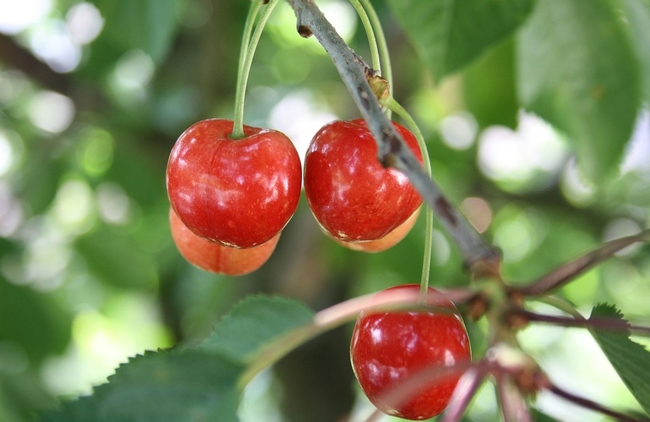National Public Radio highlighted a growing concern for San Joaquin Valley tree fruit and nut farmers - diminishing winter chill in an age of climate change. "Warm winters mess with nut trees' sex lives," reported Lauren Summer on Morning Edition.
For example, adequate winter chill allows female and male pistachio trees to wake up simultaneously, which is ideal for pollen to be available for wind to carry it to blooms on female trees.
Fresno State agriculture professor Gurreet Brar, a former UC Cooperative Extension advisor, is testing whether horticultural spray application at different chill-hour intervals will trick trees into thinking they've been colder. Normally, the spray is used on fruit and nut trees to control insects, but it's also known to alter the tree's dormancy period.
"It's supposed to help the tree and buds wake up normally and have a normal bloom," Brar said.
Summer also spoke to Katherine Jarvis-Shean, UC Cooperative Extension orchard systems advisor in Yolo County.
"We're on this (climate change) march and it's really just a matter of how bad it's going to be, not whether it's happening or not," Jarvis-Shean said. "Threatening those crops is really threatening the livelihoods of a lot of Californians."
Fruit and nut trees that require the most winter chill will run into trouble by mid-century, when experts predict consistently warmer weather, Summer reported.
"Bing cherries, which is really the marquee variety in California, won't get enough chill," Jarvis-Shean said. "We'll need to be breeding new varieties that still have that rich ruby flesh and that juicy flavor that can do well under those low chill conditions."
Better-adapted trees may be the only strategy in the long-run, she said. Efforts are already underway to breed new varieties of pistachios that can handle warmer winters.
